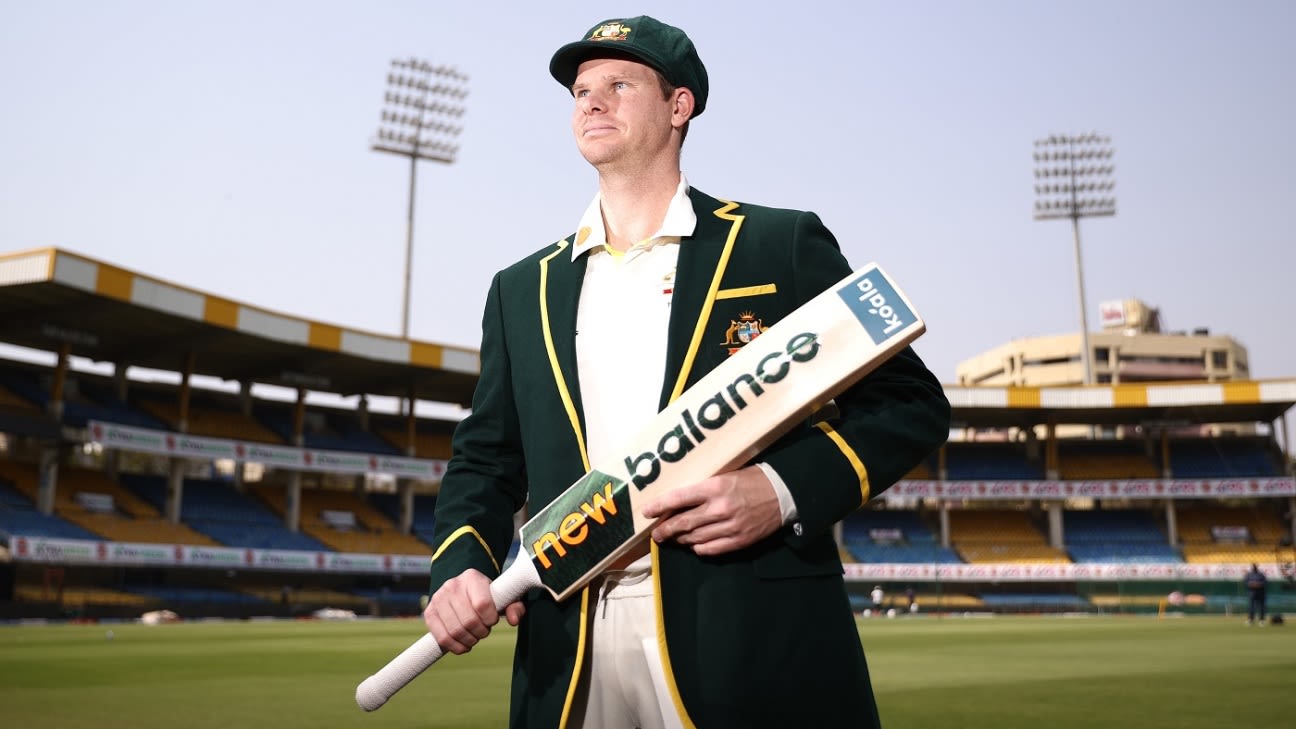
That was the situation which emerged on Tuesday in Ahmedabad with Australia leaving the ground still in the dark over which of the two surfaces would be used for the final Test. However, after the visitors had departed the picture became clearer. India's hierarchy focused their attention on the drier, black-soil pitch, instead of the red-soil one which also appeared significantly greener - although the groundsman had told Smith both would have been significantly trimmed of grass.
"[There] might have been a couple of [pitches] prepared maybe a bit longer out than two days but I can't remember two days," Smith said.
Even by the time Australia had finished training on Tuesday, around four hours after arriving at the ground, the likely Test pitch had already started to change character.
"I didn't go out and have a look in the afternoon but Alex Carey did," Smith said. "It looked completely different, a lot drier in the afternoon. It's very hot here, 37 degrees, which gives it a chance to dry out and I think that the cover was on for a bit today. So they're potentially worried that it's drying out too much. It certainly changed in a few hours. Having a look today we'll be able to potentially see what it's going to do."
"It's been weird with a bit of the commentary back home, people talking about us playing three quicks and one spinner. It's kind of mind-boggling to me when we look at these surfaces"
Smith took the opportunity for a little swipe at some of the punditry that suggested Australia should have stuck to their fast-bowling strengths with three quicks and just one spinner. That was the model which brought the 2004 series victory but on very different surfaces.
"It's been weird with a bit of the commentary back home, people talking about us playing three quicks and one spinner," Smith said. "It's kind of mind-boggling to me when we look at these surfaces and we see what we've had, 11 innings in six days or something like that, and spinners have taken the bulk of the wickets and you see how difficult it is to play the spin.
"It's kind of odd to hear that kind of commentary, but we've had faith in what we're trying to do and it's good that we are able to show that we can play with three spinners and win. We weren't too far away in Delhi either, outside of that hour of madness. Nice to know our plans and everything we are trying to do can work."
Smith looks for more lower-order runs
One area where Smith would like to see improvement is the productivity of the lower order, where India have overwhelmed what Australia have been able to produce. Even in the victory they lost 6 for 11 on the second day.
From No. 8 onwards, India have scored 307 runs at 25.58 in the series compared to Australia's 84 and 4.94. In comparison, although Rohit Sharma has scored the lone century, the top seven are all-but identical: Australia have made 776 runs at 22.92 and India 709 runs at 22.15.
Australia are not expecting the level of contribution that Axar Patel is able to provide - he would not be out of place in the top six - but want to find a way to eke out partnerships.
"The tail is something we've spoken about, probably as batters [they] haven't contributed as much as we would have liked," Smith said. "That's been a big difference when you see someone like Axar who has been incredibly difficult to get out. And in terms of our top six versus their top six, there's not a huge difference in averages for the series."
"I think it would be a huge achievement for this group, or any touring team, that comes here to India and wins two Test matches," Smith said. "Unfortunately, we weren't able to do it earlier in the series and give ourselves a chance to win but to draw the series here would be a huge plus and positive."
Andrew McGlashan is a deputy editor at ESPNcricinfo















 Phone: (800) 737. 6040
Phone: (800) 737. 6040 Fax: (800) 825 5558
Fax: (800) 825 5558 Website:
Website:  Email:
Email: 






